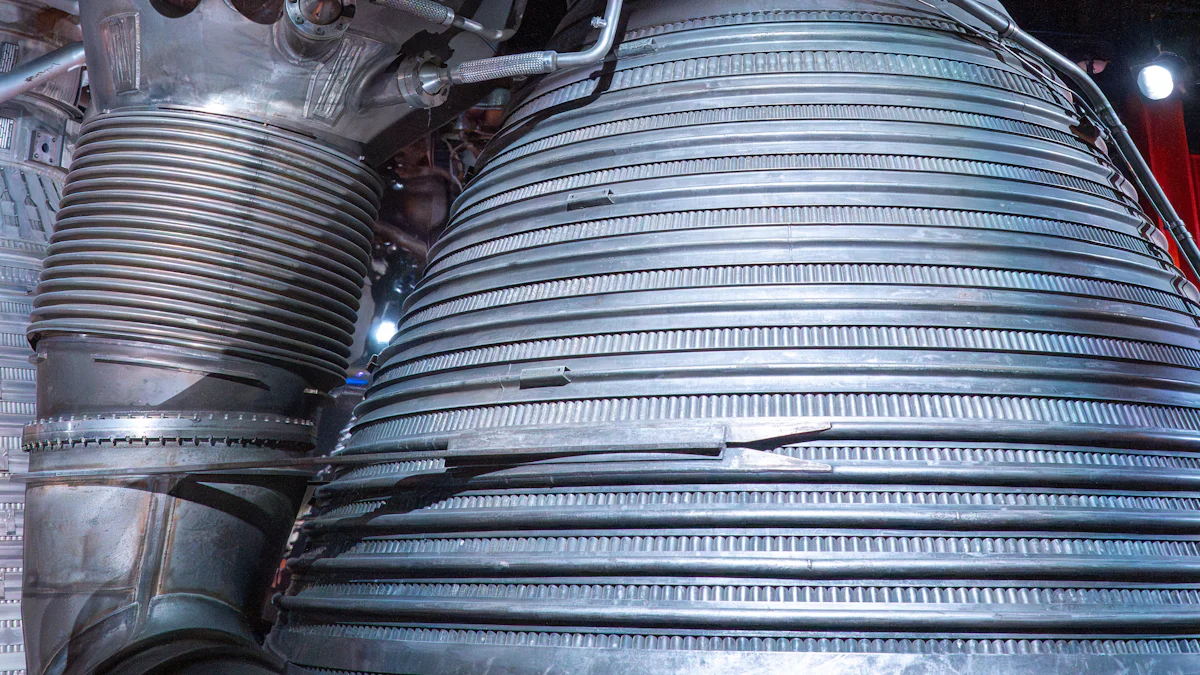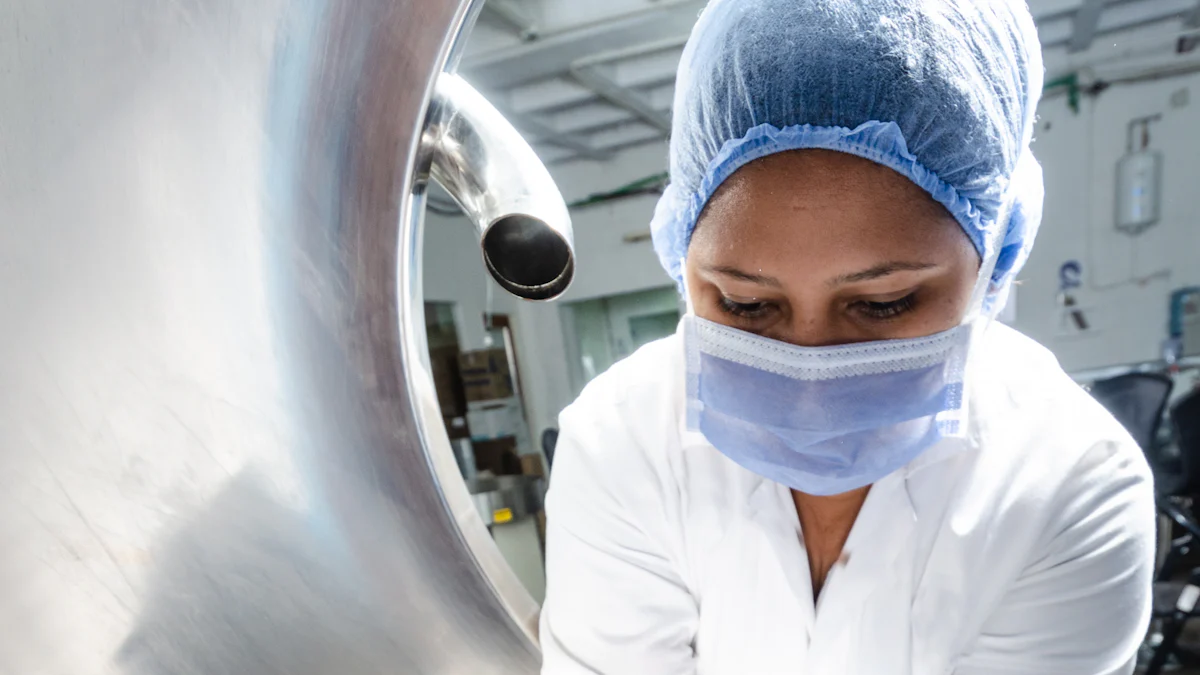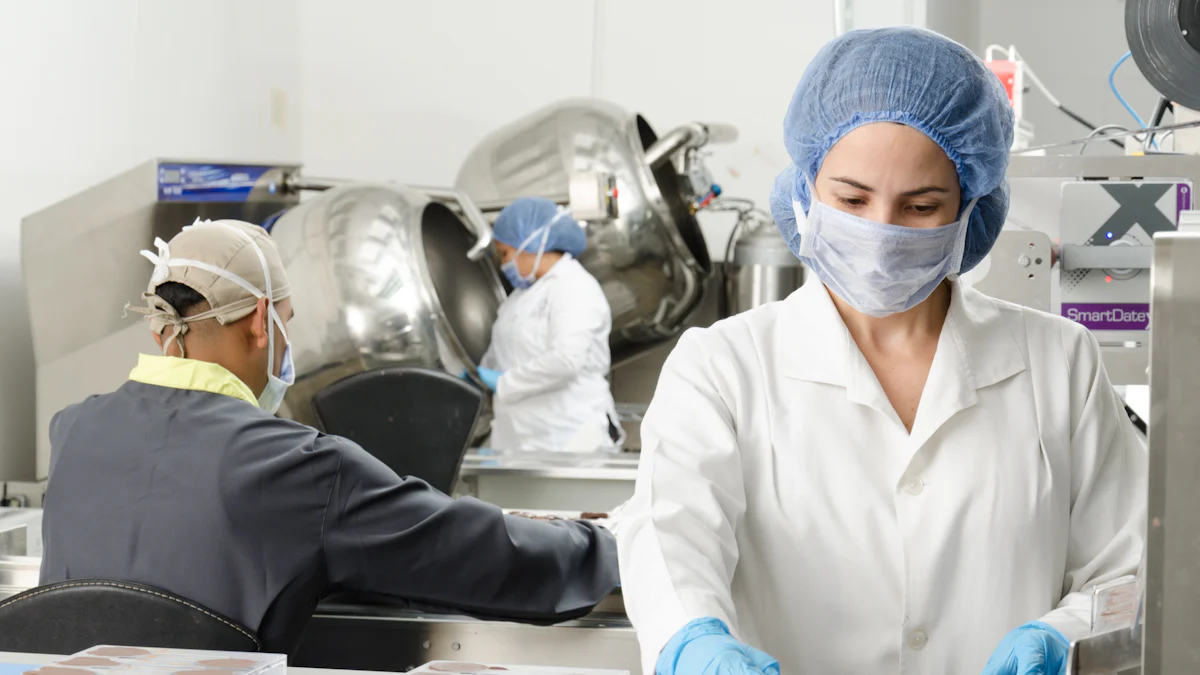Why Cryogenic Freezing Tunnels Are Key to Modern Food Safety

Imagine being able to lock in the freshness of your favorite foods instantly. That’s exactly what a cryogenic freezing tunnel does. It freezes food so quickly that harmful microbes don’t stand a chance. This rapid process keeps your food safe while preserving its taste, texture, and nutrients. You get food that’s not only fresh but also free from spoilage risks. It’s a game-changer for food safety and quality, ensuring what you eat stays as good as the day it was made.
Key Takeaways
Cryogenic freezing tunnels keep food fresh by freezing it fast. This stops big ice crystals that can ruin taste and texture.
It makes food safer by stopping germs from growing right away. This lowers the chance of food getting contaminated.
Cryogenic freezing helps food last longer, cutting down on waste. It also saves money for people and food companies.
This method is quicker, works better, and uses less energy than old freezing ways. It is also better for the environment.
Using cryogenic freezing helps make food production greener. It matches the need for eco-friendly choices.
Understanding Cryogenic Freezing Tunnels

The Science of Cryogenic Freezing
Cryogenic freezing is all about speed and precision. Unlike traditional freezing methods, it uses ultra-low temperatures to freeze food almost instantly. This rapid freezing process forms tiny ice crystals instead of large ones. Why does that matter? Smaller ice crystals protect the food’s cellular structure. That means your food keeps its texture, flavor, and nutrients intact.
The secret lies in the temperatures. Liquid nitrogen, one of the main gases used, operates at a bone-chilling -196°C. This extreme cold freezes food so quickly that it prevents damage caused by slower methods. Carbon dioxide, another gas used in cryogenic freezing, works at around -62°C. While it’s not as cold as liquid nitrogen, it’s still effective for certain products. Together, these gases ensure your food stays fresh and safe.
Key Components of a Cryogenic Freezing Tunnel
A cryogenic freezing tunnel, also known as iqf tunnel freezers, is a marvel of engineering. It’s designed to freeze food in a controlled environment where temperature and airflow are carefully managed. Here’s what makes it tick:
Freezing Chamber: This is where the magic happens. Food moves through the chamber on a conveyor belt, exposed to liquid nitrogen or carbon dioxide.
Conveyor System: The conveyor ensures food moves at the right speed for even freezing.
Temperature Controls: These maintain the ultra-low temperatures needed for rapid freezing.
Insulation: Thick insulation keeps the cold inside, making the process energy-efficient.
These components work together to create iqf tunnel freezers that deliver consistent results every time.
How the Rapid Freezing Process Works
The rapid freezing process in tunnel freezers is fascinating. Picture this: food enters the freezing chamber on a conveyor belt. As it moves through, liquid nitrogen or carbon dioxide rapidly lowers the temperature. This quick drop prevents large ice crystals from forming. Instead, tiny crystals form, preserving the food’s quality.
This process is especially important for individual quick freezing (IQF). IQF tunnel freezers freeze each piece of food separately. For example, think of frozen berries or shrimp. Each piece stays distinct, making it easy to portion and use later. The controlled environment inside the tunnel ensures consistent results, no matter the product.
By freezing food so quickly, iqf tunnel freezers help maintain freshness, extend shelf life, and enhance food safety. It’s a win-win for both manufacturers and consumers.
Benefits of Cryogenic Freezing for Food Preservation

Preserving Food Quality and Freshness
When it comes to food preservation, keeping the original quality intact is a top priority. Cryogenic freezing tunnels excel at this. They use ultra-low temperatures to freeze food in minutes, which prevents large ice crystals from forming. Why is that important? Large ice crystals can damage the cellular structure of food, leading to a loss of texture and flavor. With cryogenic freezing, you get smaller ice crystals that protect the food’s integrity.
Here’s how it works:
Tunnel freezers lock in moisture, flavor, and texture, especially in seafood and meat.
Delicate items like berries stay firm and retain their nutritional value.
The rapid freezing process preserves the vibrant color and natural taste of fruits and vegetables.
This method ensures that when you thaw your food, it looks and tastes as fresh as the day it was frozen. That’s quality retention at its best.
Enhancing Food Safety Standards
Food safety is non-negotiable, and cryogenic freezing plays a huge role in meeting high standards. The rapid freezing process stops microbial activity almost instantly. This means bacteria don’t get the chance to grow, reducing the risk of contamination.
Here’s why iqf tunnel freezers are a game-changer for food safety:
They limit microbial growth by freezing food quickly.
The process minimizes contamination risks by halting bacteria in their tracks.
Individual quick freezing ensures each piece of food is frozen separately, reducing cross-contamination.
By using tunnel freezers, you’re not just preserving food—you’re making it safer for everyone.
Reducing Food Waste and Extending Shelf Life
Food waste is a global issue, but iqf tunnel freezers offer a solution. By freezing food quickly and effectively, they extend shelf life significantly. This means less food ends up in the trash.
Think about it: when food stays fresh longer, you have more time to use it. Tunnel freezers also help manufacturers freeze surplus produce, reducing waste during peak harvest seasons. Plus, the individual quick freezing method makes it easier to portion food, so you only use what you need.
With cryogenic freezing tunnels, you’re not just saving food—you’re saving money and resources too. It’s a win for your wallet and the planet.
Comparing Cryogenic Freezing with Other Methods
Cryogenic Freezing vs. Mechanical Freezing
When it comes to freezing food, speed makes all the difference. Cryogenic freezing outpaces mechanical freezing by a wide margin. It uses liquid nitrogen at temperatures as low as -196°C to freeze food almost instantly. Mechanical freezing, on the other hand, works much slower and doesn’t reach such extreme temperatures.
Here’s why that matters:
Cryogenic freezing prevents large ice crystals from forming. These crystals can damage the cell membranes of food, leading to a loss of texture and flavor.
Mechanical freezing, due to its slower process, often results in larger ice crystals. This can compromise the quality of your food.
If you’re looking for better food preservation, cryogenic freezing is the clear winner. It locks in freshness, texture, and nutrients far more effectively than mechanical methods.
Cryogenic Freezing vs. Blast Freezing
Blast freezing is another common method, but it doesn’t hold a candle to cryogenic freezing. While both methods aim to preserve food, cryogenic freezing delivers superior results.
Here’s how cryogenic freezing stands out:
It maintains the texture, color, and flavor of food better than blast freezing.
It prevents nutrient loss, ensuring your food retains its vitamins and minerals.
It halts microbial activity almost instantly, reducing foodborne risks.
Blast freezing, while effective, can’t match the rapid freezing process of cryogenic methods. The slower freezing speed in blast freezing allows larger ice crystals to form, which can damage the food’s structure. Cryogenic freezing, by contrast, preserves the integrity of your food, making it look and taste as fresh as the day it was frozen.
Why Cryogenic Freezing is Superior
Cryogenic freezing isn’t just faster—it’s smarter. It uses advanced technology to deliver unmatched quality retention. Foods frozen in iqf tunnel freezers keep their shape, texture, and nutritional value intact. Whether it’s seafood, fruits, or vegetables, cryogenic freezing ensures your food stays at its best.
This method also supports individual quick freezing, where each piece of food is frozen separately. That means no clumping, easier portioning, and less waste. Tunnel freezers designed for cryogenic freezing are a game-changer for food preservation. They combine speed, efficiency, and precision to give you the highest quality results.
When you compare cryogenic freezing to other methods, the choice is clear. It’s faster, safer, and better for preserving the foods you love.
Economic and Environmental Advantages
Cost Efficiency for Food Manufacturers
Adopting cryogenic freezing technology can feel like a big investment upfront, but it pays off in the long run. You’ll need specialized equipment, skilled operators, and a steady supply of liquid nitrogen or carbon dioxide. These costs might seem high, but the benefits outweigh them. Cryogenic freezing is faster and more efficient than traditional methods, which means you can process more food in less time. This boosts productivity and reduces operational costs over time.
Plus, iqf tunnel freezers help you minimize waste. By preserving food quality and extending shelf life, you’ll save money on spoiled or discarded products. For manufacturers, this means fewer losses and higher profits. It’s a smart way to balance initial expenses with long-term savings.
Energy Efficiency and Sustainability
Cryogenic freezing isn’t just fast—it’s energy-efficient too. Unlike mechanical freezing systems that take hours or even days to freeze food, iqf tunnel freezers get the job done in minutes. This rapid process uses less energy overall, making it a more sustainable choice for food preservation.
Modern iqf tunnel freezers are designed with advanced insulation and control systems. These features reduce wasted energy and ensure optimal performance. By switching to cryogenic methods, you’re not only cutting down on energy bills but also lowering your carbon footprint. It’s a win for your business and the planet.
Supporting a Greener Food Industry
If you care about sustainability, cryogenic freezing is the way to go. Energy-efficient iqf tunnel freezers significantly reduce greenhouse gas emissions. This helps combat climate change and supports a greener food industry. Advanced designs and materials make these freezers eco-friendly, while their rapid freezing process ensures minimal energy consumption.
Cryogenic freezing also aligns with the growing demand for sustainable food preservation. As the industry evolves, this technology will play a key role in creating a more sustainable food system. By adopting iqf tunnel freezers, you’re not just preserving food—you’re preserving the planet for future generations.
Cryogenic freezing tunnels have revolutionized food safety and preservation. Their rapid freezing process halts microbial activity almost instantly, reducing foodborne risks and preserving the natural qualities of your favorite foods. Unlike traditional methods, iqf tunnel freezers prevent large ice crystals from forming, protecting the texture, shape, and nutrients of every item.
As food quality standards rise, cryogenic technology is becoming indispensable. You’ll see innovations like automated iqf tunnel freezers for large-scale processing and sustainable cryogen production, making this method even more efficient and eco-friendly. Whether you’re a food manufacturer or a consumer, cryogenic freezing ensures safer, fresher, and higher-quality products while supporting a greener future.
FAQ
What makes cryogenic freezing better than traditional freezing methods?
Cryogenic freezing works faster and preserves food quality better. It prevents large ice crystals from forming, which protects the texture, flavor, and nutrients of your food. Traditional methods take longer and often compromise quality.
Can cryogenic freezing be used for all types of food?
Yes! Cryogenic freezing works for almost any food, from seafood and meat to fruits and vegetables. It’s especially effective for delicate items like berries or high-value products like shrimp, where quality preservation is critical.
Is cryogenic freezing environmentally friendly?
Absolutely. Cryogenic freezing uses less energy compared to traditional methods. Advanced insulation and efficient designs reduce waste, making it a greener choice. Plus, it aligns with sustainability goals by extending shelf life and reducing food waste.
How does cryogenic freezing improve food safety?
The rapid freezing process stops microbial activity almost instantly. This reduces the risk of contamination and keeps your food safer. It also minimizes cross-contamination by freezing individual pieces separately, especially in IQF tunnel freezers.
Are cryogenic freezing tunnels expensive to operate?
While the initial investment might seem high, cryogenic freezing saves money over time. It’s faster, reduces food waste, and boosts productivity. These benefits outweigh the costs, making it a cost-effective solution for food manufacturers.
See Also
The Impact of Cryogenic Freezers on Food Quality
Revolutionizing Food Production with Quick Freezing Tunnels
IQF Tunnel Freezers: Revolutionizing Food Storage Solutions

